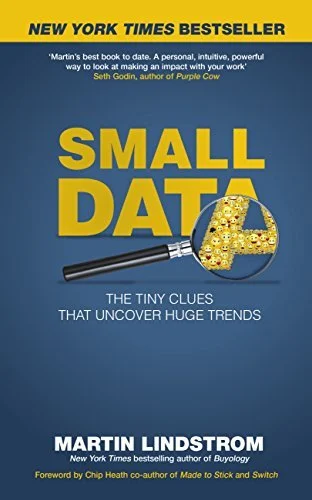Insights are foundational elements of intelligence that allow executives, managers, and teams to make effective decisions for business success. Simply, a consumer insights professional is part detective, part analyst, and part politician. As a detective the first job is to understand what your client wants and then find the data. Then, do the analysis including perceiving the decision maker’s biases. Follow-up analysis with a good rebuttal of decision-maker objections, and effectively answer valid objections. As a politician, a good analyst spots things before others. She survives by becoming very persuasive and able to defend her conclusions well.
As a long-time researcher, I am always looking for ways to engage stakeholders and overcome resistance to participating in research studies or using research findings. I just finished a great book by Tomar Sharon, It’s Our Research. The book provides great tactics to create a team of engaged stakeholders. Sharon focuses on user-experience (UX) research, but his recommendations will work for physical products as well as marketing research. No matter which area researchers focus, we still suffer from lack of engagement.
As a long-time market researcher, both quantitative and qualitative, I am always on the hunt for good research books. Hoping to find new ways to perform my job and upskill, I love learning from other professionals. Global brand consultant Martin Lindstrom wrote an interesting book to help market researchers and brand managers better understand customers through qualitative research. Small Data: The Tiny Clues that Uncover Huge Trends is a collection of Lindstrom’s travels and his techniques for what he refers to as a “sped-up version of ethnography” (he calls it Subtext Research).
Our friends over at FortNine (https://fortnine.ca/en/) informed us of an interesting research paper published in the March 2024 issue of Economics of Transportation journal (volume 37). The paper by Justin Tyndall studies the effect of front-end vehicle height on pedestrian death risk. As the size of vehicles has increased over the years (as well as pedestrian deaths), Tyndall investigated the effect of front-end height over 1.25 meters (about 4 feet) on pedestrian death. He notes the increased height of vehicle front-ends may present a danger for pedestrians in a crash, as the point of vehicle contact is more likely to occur at the pedestrian’s chest or head.
In the March/April 2024 issue of Car & Driver magazine, Jamie Kitman points out the gains and pains within the current four-wheel EV landscape. Kitman’s Upfront article, Alternating Current provides the painful reality of “piss poor planning” (my words, not his) within the hallowed walls of auto OEs, again. As history seems to always repeat itself, once again the lack of reality has bit auto manufacturers in the ass. When global governments started mandating zero-emissions by 2035, the OEs’ jealousy of Tesla gained unprecedented momentum.
An After-action Report (AAR) is a structured debriefing to analyze what happened during a process and identify areas of improvement for continuous learning. Used extensively in the military, an AAR is a great tool for an organization to evaluate an event.
The worst part of decision-making is presenting to senior leaders or problem owners and receiving a lot of pushback and resistance. The negativity demoralizes you and reduces your credibility. An excellent technique to avoid this situation and to get your ideas accepted is the Japanese method of consensus-building known as nemawashi an informal process to reduce unnecessary friction before officially presenting your idea.
Most people have incorrect assumptions about creativity. They think you either have it or you do not. Many people think new ideas just happen, serendipitously — but creativity is not mysterious. Everyone can (and should) become more creative.
SCAMPER is an excellent creative thinking tool. This easy-to-learn and easy-to-use tool helps you develop novel ways to reimagine a product or process rather than recycling the same old “ingredients” (Johnson, 2010). SCAMPER allows you to rearrange existing variables into new combinations (Basadur, 1995). The SCAMPER mnemonic stands for: Substitute, Combine, Adapt, Modify, Put to another use, Eliminate, and Reverse.
We all “brainstorm” individually or in small groups to toss ideas around and talk through various challenges. Ad hoc idea generation is helpful and a great way to “throw around” ideas (free association) and warm-up prior to using creative thinking tools. This warm-up is often a great way to pull “top-of-mind” information from coworkers and then dig deeper to develop new ideas, options, or alternatives. However, formal brainstorming is not very effective to generate new ideas. Sorry to burst your bubble, but brainstorming is not one of the tools in this section for developing new ideas.










